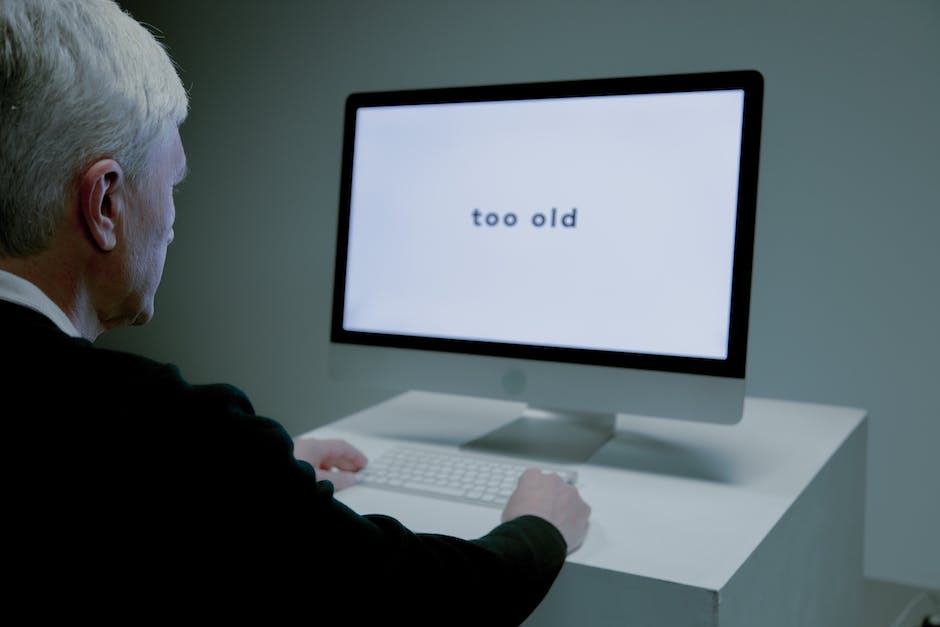Table of Contents
Breaking Barriers, Embracing Equality: Unveiling Ageism through 10 Workplace Scenarios
Introduction
Ageism refers to the discrimination or prejudice against individuals based on their age, particularly in the workplace. It is a pervasive issue that can have detrimental effects on older employees, hindering their career growth and overall well-being. To shed light on this problem, this article will provide 10 workplace examples that illustrate the various forms of ageism that older workers may encounter. By understanding these examples, we can work towards creating more inclusive and equitable work environments for individuals of all ages.
The Impact of Ageism on Employee Productivity and Engagement

Understanding Ageism: 10 Workplace Examples
Ageism, the discrimination or prejudice against individuals based on their age, is a pervasive issue that affects people in various aspects of their lives, including the workplace. This article aims to shed light on the impact of ageism on employee productivity and engagement by providing 10 workplace examples.
1. Limited Opportunities for Advancement: Older employees often face limited opportunities for career advancement due to ageist assumptions that they lack the necessary skills or are less adaptable to change. This can lead to decreased motivation and engagement.
2. Stereotyping and Preconceived Notions: Ageism perpetuates stereotypes that older workers are technologically inept, resistant to change, or less capable of learning new skills. These preconceived notions can hinder collaboration and innovation within the workplace.
3. Exclusion from Decision-Making Processes: Ageism can result in older employees being excluded from important decision-making processes, despite their valuable experience and expertise. This exclusion can lead to feelings of disengagement and underutilization of skills.
4. Lack of Training and Development Opportunities: Older employees may be denied training and development opportunities, as employers may assume they are not interested in learning or that it is not worth investing in their growth. This lack of investment can hinder productivity and limit career growth.
5. Inadequate Mentoring and Coaching: Ageism can lead to a lack of mentoring and coaching opportunities for older employees, depriving them of valuable guidance and support. This can hinder their professional development and limit their ability to contribute effectively.
6. Unfair Performance Evaluations: Ageism can manifest in unfair performance evaluations, where older employees are judged more harshly or held to different standards compared to their younger counterparts. This can demoralize older employees and negatively impact their productivity.
7. Reduced Job Security: Older employees may face higher levels of job insecurity due to ageism, as employers may view them as less valuable or more likely to retire soon. This uncertainty can lead to decreased engagement and motivation.
8. Lack of Recognition and Appreciation: Ageism can result in older employees not receiving the recognition and appreciation they deserve for their contributions. This lack of acknowledgment can diminish their sense of belonging and commitment to the organization.
9. Limited Access to Flexible Work Arrangements: Older employees may face challenges in accessing flexible work arrangements, such as part-time or remote work options, due to ageist assumptions that they are less adaptable or committed. This lack of flexibility can hinder work-life balance and overall job satisfaction.
10. Social Isolation and Exclusion: Ageism can lead to social isolation and exclusion within the workplace, as older employees may feel disconnected from their younger colleagues. This isolation can negatively impact teamwork, collaboration, and overall employee engagement.
In conclusion, ageism in the workplace has a significant impact on employee productivity and engagement. From limited opportunities for advancement to unfair performance evaluations and social isolation, the consequences of ageism are far-reaching. It is crucial for organizations to recognize and address ageism to create an inclusive and supportive work environment that values employees of all ages. By fostering a culture that appreciates the diverse skills and experiences of older workers, organizations can harness their full potential and enhance overall productivity and engagement.
Strategies for Combating Ageism in the Workplace
Ageism is a pervasive issue in today’s workplace, with older employees often facing discrimination and bias based solely on their age. This form of discrimination can manifest in various ways, from subtle comments and assumptions to outright exclusion from opportunities and promotions. In order to combat ageism in the workplace, it is crucial to understand its various manifestations and develop strategies to address them effectively.
One common example of ageism in the workplace is the assumption that older employees are less technologically savvy than their younger counterparts. This assumption can lead to older employees being excluded from training programs or overlooked for positions that require technological skills. To combat this, organizations can provide technology training programs specifically tailored to older employees, ensuring that they have the necessary skills to thrive in a digital workplace.
Another example of ageism is the belief that older employees are less adaptable and resistant to change. This stereotype can result in older employees being excluded from decision-making processes or not being given the opportunity to contribute their valuable insights and experiences. To address this, organizations can create a culture of inclusivity and actively seek input from employees of all ages. Additionally, mentoring programs that pair older employees with younger ones can help foster mutual understanding and bridge the generation gap.
A third example of ageism is the assumption that older employees are less ambitious and motivated than their younger counterparts. This stereotype can lead to older employees being passed over for promotions or not being given challenging assignments. To combat this, organizations can implement performance evaluation systems that are based on merit rather than age. Additionally, providing opportunities for professional development and growth can help older employees stay motivated and engaged in their work.
Another manifestation of ageism is the belief that older employees are more likely to have health issues and therefore less reliable. This stereotype can result in older employees being given less responsibility or being excluded from high-stress projects. To address this, organizations can implement policies that promote work-life balance and provide support for employees of all ages to maintain their health and well-being. Additionally, creating a culture that values and respects all employees can help dispel these stereotypes.
A fifth example of ageism is the assumption that older employees are less creative and innovative than their younger counterparts. This stereotype can lead to older employees being excluded from brainstorming sessions or not being given the opportunity to contribute their ideas. To combat this, organizations can create diverse teams that include employees of all ages, fostering a collaborative and inclusive environment where everyone’s ideas are valued.
Another manifestation of ageism is the belief that older employees are less productive and efficient than their younger counterparts. This stereotype can result in older employees being given less challenging tasks or being overlooked for promotions. To address this, organizations can implement performance metrics that focus on outcomes rather than hours worked. Additionally, providing opportunities for older employees to share their expertise and mentor younger colleagues can help showcase their value and contributions.
A seventh example of ageism is the assumption that older employees are less capable of learning and acquiring new skills. This stereotype can lead to older employees being excluded from training programs or not being given the opportunity to learn and grow. To combat this, organizations can provide continuous learning opportunities for employees of all ages and create a culture that values lifelong learning.
Another manifestation of ageism is the belief that older employees are less capable of working in teams and collaborating effectively. This stereotype can result in older employees being excluded from team projects or not being given leadership roles. To address this, organizations can provide team-building and communication training that emphasizes the importance of diverse perspectives and encourages collaboration across generations.
A ninth example of ageism is the assumption that older employees are less ambitious and less interested in career advancement. This stereotype can lead to older employees being overlooked for promotions or not being given the opportunity to take on new challenges. To combat this, organizations can create clear career development paths and provide mentoring and coaching opportunities for employees of all ages.
Lastly, ageism can manifest in the belief that older employees are less valuable to the organization and therefore expendable. This stereotype can result in older employees being laid off or not being given the same opportunities for growth and development as their younger counterparts. To address this, organizations can create policies that promote age diversity and inclusion, ensuring that employees of all ages are valued and given equal opportunities to contribute and succeed.
In conclusion, ageism in the workplace is a significant issue that requires attention and action. By understanding the various manifestations of ageism and implementing strategies to combat them, organizations can create a more inclusive and equitable workplace for employees of all ages. It is crucial to challenge stereotypes, promote diversity and inclusion, and create opportunities for growth and development for employees at every stage of their careers.
Recognizing and Addressing Age Bias in Hiring and Promotion
Understanding Ageism: 10 Workplace Examples
Ageism, the discrimination or prejudice against individuals based on their age, is a pervasive issue in today’s society. While it can affect people of all ages, it is particularly prevalent in the workplace. Recognizing and addressing age bias in hiring and promotion is crucial for creating a fair and inclusive work environment. In this article, we will explore 10 workplace examples of ageism, shedding light on the various ways it manifests and its impact on individuals.
1. Job Advertisements: Ageism can be evident right from the start of the hiring process. Some job advertisements may include age-related preferences, such as seeking “young and dynamic” candidates or specifying a maximum age limit. These practices exclude older individuals from consideration, perpetuating age bias.
2. Stereotyping: Ageism often involves stereotyping based on age. Older workers may be seen as technologically inept or resistant to change, while younger employees may be perceived as lacking experience or maturity. These stereotypes can lead to unfair judgments and hinder career advancement opportunities.
3. Lack of Training Opportunities: Older employees may be denied training opportunities, assuming they are less capable of learning new skills. This not only limits their professional growth but also reinforces the notion that older workers are less valuable to the organization.
4. Limited Promotions: Ageism can manifest in the form of limited promotion opportunities for older employees. Younger workers may be favored for advancement, based on the assumption that they have more potential or are a better fit for leadership roles. This practice disregards the experience and expertise that older employees bring to the table.
5. Forced Retirement: Some organizations have policies that mandate retirement at a certain age, regardless of an individual’s ability or desire to continue working. This practice not only deprives older employees of their livelihood but also perpetuates the idea that they are no longer valuable contributors to the workforce.
6. Unequal Pay: Ageism can also be reflected in unequal pay practices. Older workers may be paid less than their younger counterparts, despite having similar qualifications and experience. This wage disparity is a clear example of age-based discrimination.
7. Exclusion from Decision-Making: Older employees may be excluded from important decision-making processes, with their opinions and expertise undervalued. This exclusion not only undermines their sense of belonging but also deprives organizations of valuable insights and perspectives.
8. Lack of Mentorship: Younger employees may be provided with mentorship opportunities, while older workers are overlooked. This lack of mentorship can hinder the professional development of older employees and perpetuate the idea that they are no longer capable of growth.
9. Age-Related Jokes and Comments: Ageism can also manifest in the form of jokes and comments that belittle or mock individuals based on their age. Such remarks create a hostile work environment and contribute to a culture of age bias.
10. Inflexible Work Arrangements: Older employees may require flexible work arrangements to accommodate their changing needs, such as caregiving responsibilities or health issues. However, ageism can result in inflexible policies that do not consider these needs, making it difficult for older workers to balance their personal and professional lives.
Recognizing and addressing age bias in hiring and promotion is essential for fostering a diverse and inclusive workplace. By understanding these 10 workplace examples of ageism, we can work towards creating an environment where individuals are valued for their skills, experience, and contributions, regardless of their age. It is crucial for organizations to implement policies and practices that promote equal opportunities and challenge age-based stereotypes, ensuring that ageism has no place in the modern workplace.
Promoting Intergenerational Collaboration and Diversity in the Workplace
Understanding Ageism: 10 Workplace Examples
Promoting Intergenerational Collaboration and Diversity in the Workplace
Ageism is a form of discrimination that is prevalent in many societies, including the workplace. It refers to the unfair treatment or prejudice against individuals based on their age, particularly towards older adults. Ageism can manifest in various ways, and it is important for organizations to recognize and address this issue to promote intergenerational collaboration and diversity in the workplace. In this article, we will explore 10 workplace examples of ageism and discuss strategies to combat this form of discrimination.
1. Exclusion from decision-making processes: Older employees are often excluded from important decision-making processes, despite their wealth of experience and knowledge. This exclusion can lead to feelings of marginalization and can hinder the organization’s ability to benefit from diverse perspectives.
2. Stereotyping: Ageism can lead to the perpetuation of stereotypes about older workers. For example, they may be seen as resistant to change or lacking technological skills. These stereotypes can limit opportunities for older employees and prevent them from fully contributing to the organization.
3. Limited career advancement opportunities: Older employees may face barriers when it comes to career advancement. They may be overlooked for promotions or opportunities for professional development, based solely on their age. This can lead to frustration and a lack of motivation among older workers.
4. Unequal pay: Ageism can also manifest in unequal pay practices. Older employees may be paid less than their younger counterparts, despite having similar qualifications and experience. This pay disparity is not only unfair but also undermines the value and contributions of older workers.
5. Lack of training and development: Organizations may invest less in training and development programs for older employees, assuming that they have already reached their peak potential. This lack of investment can hinder the growth and professional development of older workers, limiting their ability to contribute to the organization.
6. Inflexible work arrangements: Ageism can be seen in the inflexibility of work arrangements. Older employees may require more flexible schedules or reduced hours due to caregiving responsibilities or health issues. However, organizations may be reluctant to accommodate these needs, leading to a lack of work-life balance for older workers.
7. Age-related jokes and comments: Workplace banter can often include age-related jokes and comments, which may seem harmless but can contribute to a hostile work environment for older employees. Such jokes can perpetuate ageist attitudes and create a culture of disrespect and exclusion.
8. Lack of mentorship opportunities: Older employees have a wealth of knowledge and experience that can be valuable to younger colleagues. However, ageism can prevent the establishment of mentorship opportunities, depriving younger employees of valuable guidance and support.
9. Limited access to technology: Older employees may face barriers when it comes to accessing and utilizing technology in the workplace. This can be due to a lack of training or assumptions about their technological competence. By providing adequate training and support, organizations can ensure that all employees have equal access to technology.
10. Retirement pressure: Ageism can also manifest in the pressure for older employees to retire prematurely. This pressure can be subtle, such as excluding older employees from important projects or denying them opportunities for growth. By valuing the contributions of older workers and providing opportunities for continued engagement, organizations can combat ageism and promote intergenerational collaboration.
In conclusion, ageism is a pervasive issue in the workplace that can hinder intergenerational collaboration and diversity. By recognizing and addressing the various forms of ageism, organizations can create a more inclusive and equitable work environment. Strategies such as promoting mentorship, providing equal opportunities for career advancement, and fostering a culture of respect can help combat ageism and harness the full potential of all employees, regardless of their age.
Q&A
1. What is ageism in the workplace?
Ageism in the workplace refers to discrimination or prejudice based on a person’s age, typically towards older individuals.
2. What are some examples of ageism in the workplace?
Examples of ageism in the workplace include denying job opportunities or promotions based on age, making derogatory comments about older employees, assuming older workers are less competent or adaptable, and excluding older employees from important projects or decision-making processes.
3. How does ageism impact older workers?
Ageism can negatively impact older workers by limiting their career advancement opportunities, reducing their job security, and undermining their self-esteem and confidence. It can also lead to increased stress and decreased job satisfaction.
4. What can organizations do to combat ageism in the workplace?
Organizations can combat ageism by implementing policies and practices that promote diversity and inclusion, providing training on age bias and unconscious bias, fostering intergenerational collaboration, and ensuring equal opportunities for career development and advancement for employees of all ages.
Conclusion
Ageism in the workplace is a prevalent issue that affects individuals of all ages. It involves discrimination or prejudice based on a person’s age, leading to unfair treatment and limited opportunities. Here are ten workplace examples that highlight the existence of ageism:
1. Older employees being passed over for promotions in favor of younger colleagues.
2. Younger employees being given more challenging and high-profile projects, while older employees are assigned less important tasks.
3. Older workers being excluded from team-building activities or social events due to assumptions about their interests or abilities.
4. Age-related stereotypes leading to assumptions that older employees are less adaptable or technologically savvy.
5. Older workers being subjected to derogatory comments or jokes about their age.
6. Younger employees receiving higher salaries or benefits compared to their older counterparts with similar qualifications and experience.
7. Older employees being denied training or professional development opportunities, limiting their career growth.
8. Age-related bias influencing hiring decisions, with employers preferring younger candidates over older ones.
9. Older workers facing pressure to retire early or being forced into early retirement due to age-related assumptions about productivity.
10. Older employees experiencing a lack of respect or recognition for their knowledge and experience, leading to decreased job satisfaction.
In conclusion, ageism in the workplace is a significant issue that affects individuals across different age groups. These ten workplace examples demonstrate the various ways in which ageism manifests, highlighting the need for organizations to address and combat this form of discrimination to create inclusive and equitable work environments.




